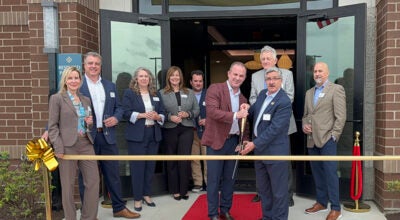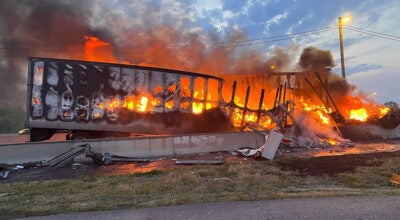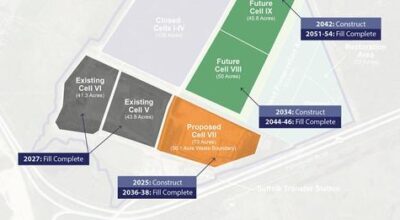SPS outlines hybrid plan for return to school
Published 8:28 pm Monday, October 12, 2020
|
Getting your Trinity Audio player ready...
|
The Suffolk School Board delayed action on the division’s hybrid return-to-school plan that would see students return to school in November.
Following pleas from impassioned parents to reopen schools, and after an explanation of the plan by division administrators and discussion of it by the board at its Oct. 8 meeting, it voted 4-3 to table action until Oct. 23, the day of the board’s retreat at the College and Career Academy at Pruden. Chairwoman Phyllis Byrum, Sherri Story and David Mitnick voted against that. A special meeting would be held either before or after the retreat.
The plan would reopen schools for pre-kindergarten through fifth-grade students Nov. 16, and for other students Nov. 30. Students would be placed into two groups that would attend school in person twice per week on alternating days, with virtual learning on the other two days. Fridays would still be reserved for enrichment and remediation for students, and professional development for teachers. Conferences with students would also continue to be done on Fridays.
Superintendent Dr. John B. Gordon III said the return dates were chosen deliberately. The plan had been to have students begin coming back Nov. 9, but teachers’ grades are also due in that time period, and Veterans Day is Nov. 11. Also, he said if there are positive COVID-19 cases over the fall and winter breaks, anyone with the virus would have time to get better before returning to school.
The division had proposed having special education students going to school on four half-days per week. However, the board voted 5-2 against that, leaving special education students in school two days per week.
CCAP students, who would also return Nov. 30, would return for one day per week at their base school and two days at CCAP.
Parents who want their children to stay with virtual learning can continue with that, but the division is allowing them, until Oct. 14, to choose between the hybrid and virtual learning plans. Those who do not respond to the survey will have their children placed into hybrid learning.
Outlining the plan
Suffolk Public Schools’ Chief of Administrative Services Dr. Suzanne Rice said the return-to-school dates are tentative and could change depending on COVID-19 metrics.
“Hopefully, the data will show that we can move forward with those dates,” Rice said. “But again, it’s fluid because the data has to tell us which direction we’re going.”
Rice said the goal would be to keep siblings in the same group that would attend school on the same days, and buses would return to the same three tiers as before.
“Once we have buses on the road for students, we have to return to the original three tiers that we’ve had,” Rice said. “The early tier being middle, then high and then elementary. That’s the only way we’ll be able to transport everybody.”
When the division knows the wishes for each student, parents will be notified about their child’s schedule, parent acknowledgement forms will be sent out and bus routes will be advertised.
After a survey before the start of the school year, the division said it expected 2,696 elementary students, 1,918 middle school students and 2,419 high school students based on fall registration numbers to need bus transportation — 7,035 students, or roughly half of the division’s students.
Rice said those numbers would likely change following the results of the current survey, but it gave school principals and the division’s transportation department the ability to do some preliminary planning.
Chief Academic Officer Dr. Okema Branch outlined a sample virtual elementary student schedule, noting the face-to-face hybrid schedule would be standard and set according to each school. The sample virtual schedule has elementary students starting at 9:25 a.m. and finishing at 3:50 p.m.
Branch said each grade level would have someone designated to be the virtual teacher, who will be responsible for the instruction, grading, and be in alignment with the hybrid teachers with their pacing. Virtual and hybrid students would continue to use the Canvas platform for the learning management system. Resource classes would remain as virtually-recorded videos for virtual students, while in the hybrid model, resource classes would take place in the schools every two weeks.
Dr. Maria Lawson-Davenport, advanced instruction supervisor, said secondary students’ sample virtual schedule would have them return to their tiered block schedules in hybrid learning. The schedule for middle school students would be from 7:25 a.m. until 2 p.m. and for high school students it would go from 8:20 a.m. until 3 p.m.
Teachers would instruct hybrid students during the first 45 minutes of the block and then teach virtual students live during the second half of the block, Lawson-Davenport said. Teachers who must be 100% virtual would instruct all of their students virtually during their scheduled block.
Lawson-Davenport said each in-person hybrid class would have fewer students, because those students would be split up into alternating days, with the remainder of students attending classes virtually.
Factoring for COVID-19
Rice said parents or guardians should screen their children for COVID-19 symptoms before sending them to school each day and would receive a parent acknowledgement form certifying that they will do this. She outlined protocols for students or staff members who either have symptoms or test positive for COVID-19, and cannot be attributed to a pre-existing condition, they will be asked to stay at home. If they occur while at school, students or staff would be placed in isolation rooms at each school before being sent home.
Human Resources Director Dr. Rodney Brown would then get involved to begin contact tracing if it involves a staff member — the school nurse would begin the contact tracing process for a student — and Supervisor of Health Services Sara Williford would also be contacted if it involves a student. At that point, the division would contact the city’s health department to determine next steps.
Symptomatic students or staff members will be required to stay home for 10 days, be fever-free for at least 24 hours without medication before returning to school and show improvement in whatever symptoms they had been experiencing. Rice said the division expects the staff member or student to be in the virtual format during this time, if able.
Those exposed to a probable positive case will also be asked to stay home for 10 days, and if a probable-positive student is at home, any brother or sister of theirs who attends public school in Suffolk will also be required to stay home.
What won’t — and can’t — be required is a COVID-19 test, Rice said.
Director of Facilities and Planning Terry Napier would also be notified to begin the cleaning process.
The division would send letters home in the event of a positive COVID-19 case at a school, and there will be different letters based on whether there was exposure, to anyone in the school community. It would also note the last time the person was on school property.
Board weighs in
Board member Tyron Riddick said he does not support reopening schools, citing concerns about flu season interacting with COVID-19, and then the timing of returning to school around a holiday period. He favors returning to in-person instruction after the winter break.
“From going out into the communities and talking to parents as well as students, as well as visiting the schools, as well as my email feed and other methods of communication,” Riddick said, “I believe there’s a large population of Suffolk that is not interested in going back to school early.”
In hearing from more than a dozen parents during public comment earlier in the meeting expressing a desire for in-person instruction, Story called for giving parents a choice on whether to send their children back to school.
“We’re not saying if we open school, then all students have to be there,” Story said. “We’re opening our schools in such a way that we are giving a safe environment, as safe as we can, and they sign things, and it’s the parents’ choice. And if we don’t open the schools and give them this choice, then we are then choosing for them. We’re saying, ‘You must stay home. We know better than you.’”
Board Vice Chairwoman Dr. Judith Brooks-Buck said the dates proposed to reopen schools must be separated from the plan itself, since the dates are fluid based on COVID-19 data.
Brooks-Buck asked for the decision on reopening schools to be deferred until Oct. 23.
Mitnick said the date was in the plan to work through its logistics. He asked about elementary school teachers and whether they would have the option of teaching virtually or in the classroom. Mitnick said he is concerned about teachers having to teach both virtually and in the classroom. He asked if there could be designated virtual teachers at the secondary level.
“I, like all of you, have heard from so many teachers that are working 16 hours a day and at least six days a week,” Mitnick said. “Now to have them do both hybrid and virtual, are we not setting ourselves up for failure? Our teachers can only take so much. Some of them are getting to the point where they don’t know how much longer they can hang on and do this.”
Gordon said the number of elementary virtual teachers per grade level would be determined by how many students select the virtual learning option, and there could be more than one depending on the results of the latest survey.
As for secondary teachers, Gordon said the plan was originally to have designated virtual instructors, but the lack of teacher certifications in specific areas forced its hand.
“In some cases, yes, we will be able to have some designated virtual instructors,” Gordon said. “But the main issue is the overall logistics at the secondary level is based on the teacher certifications.”
Gordon said the division wants to use a flipped-classroom model, noting that with only half of the hybrid students being at school on any given day, it will allow for virtual students to do activities that will go along with the lesson the teacher is giving in the classroom, and then after 45 minutes, that will be flipped, with the teacher then giving the lesson to students online, and the students in the classroom doing the activities.
“The challenge that we have at the secondary level is we do not want to re-do 7,500 master schedules,” Gordon said.
At the elementary level, Gordon said it is possible that students will have to change teachers if they continue with virtual instruction.






